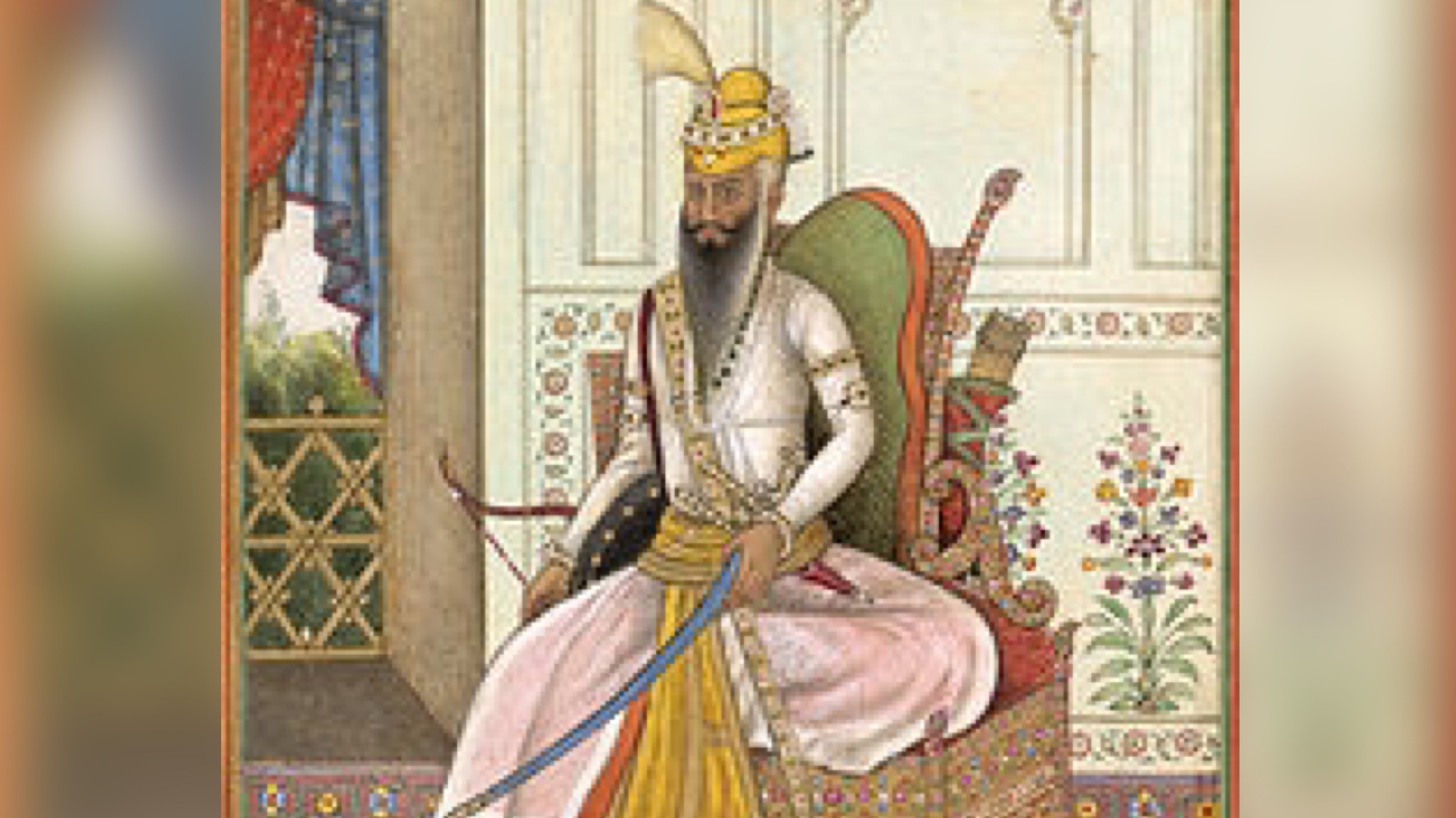Maharaja Ranjit Singh, the first great ruler of the Sikh Empire, was born on 13 November 1780. His parents Sardar Maha Singh and Sardarni Raj Kaur named him Buddh Singh. Sardar Maha Singh was the Commander-in-chief of the Sukerchakia Misi, a sovereign kingdom in Punjab.
When Buddh Singh was a child, he survived a smallpox attack but lost vision in his left eye. However, it did not handicap him. And although he did not receive formal schooling, he was trained into a warrior, with mastery in horseriding, martial arts, and the art of using arms.
At ten years, when fellow children took pleasure playing around, Buddh Singh was already fighting battles alongside his father. And in his teens, he was fighting his enemies with great courage. In one such battle, he defeated Pir Muhammad. Celebrating that victory, Buddh’s father renamed him ‘Ranjit Singh,’ implying the victor in warfares.
In 1797, at the age of 17, Ranjit Singh fought an invading army of 12,000 Afghan soldiers under General Shahanchi Khan. The army general and his soldiers were sent by the Afghan ruler Shah Zaman of the Ahmad Shah Abdali dynasty to annex Punjab. However, Ranjit Singh emerged victorious resisting the invading army.
However, in 1798, when the Afghans returned with a larger army, Ranjit Singh allowed them to enter Lahore in erstwhile Punjab. After letting them inside the city, Ranjit Singh’s army encircled them and cut all food supplies to the invaders, forcing the Afghans to retreat.
A year later, Raja Ranjit Singh and his mother-in-law Rani Sada Kaur attacked Bhangi Sikhs with 25,000 strong Khalsa army each and invaded Lahore. In 1800, Jammu too came under his control.
During his reign, Raja Ranjit Singh invested heavily in making Punjab self-reliant in arms manufacturing. He established mines, cannon foundries, and arms factories. He improved the state’s security situation and ensured undeterred trade and commerce.
In those days, Punjab was divided into 12 sovereign kingdoms called Misis. Though they were under the Sikh Khalsa, they kept fighting between themselves over tax collection. But Maharaja Ranjit Singh united them all and built the independent Sikh empire. He also declared himself the “Maharaja of Punjab” when he was just 21.
After conquering Amristar, he rebuilt the Harmandir Saheb (The Golden Temple), which was desecrated by the invading Afghan armies. In 1806, Maharaja Ranjit Singh signed a treaty with the British East India Company. According to the treaty, Maharaja Ranjit Singh and his army would not cross the South of the Sutlej river and the East India company should not cross Sutlej and enter the Sikh territory.
Later, in 1807, he fought the battle of Kasur, defeating Afghan chief Qutd-bud-Din. Maharaja Ranjit Singh’s conquest continued further, winning Srinagar, Peshawar, and Multan. The Battle of Jamrud in 1837 was the last battle between Sikhs under him and the Afghans.
During Maharaja Ranjit Singh’s rule, the Sikh empire flourished. He treated people of all religions, castes, and creeds equally. However, on 27 June 1839, he died in sleep after suffering many health complications and a stroke. Maharaja Ranjit Singh was called Sher-e-Punjab (Lion of Punjab). True to it, he fought many battles with courage and came victorious. But after his death, the Sikh empire declined. After two Anglo-Sikh wars, the rule of the Sikh Empire came to an end.
According to many historians, Maharaja Ranjit Singh had 30-40 wives during his lifetime. In 1889, answering an interview for the French journal Le Voltaire, Duleep Singh, the youngest son of Maharaja Ranjit Singh, stated, “I am the son of one of my father’s forty-six wives.” Contrary to the popular version of Maharaja Ranjit Singh’s life, some 19th-century Muslim historians give a different account, calling his military victories an insatiable appetite for plunder.
Reference & Image: https://en.m.wikipedia.org/wiki/Ranjit_Singh

